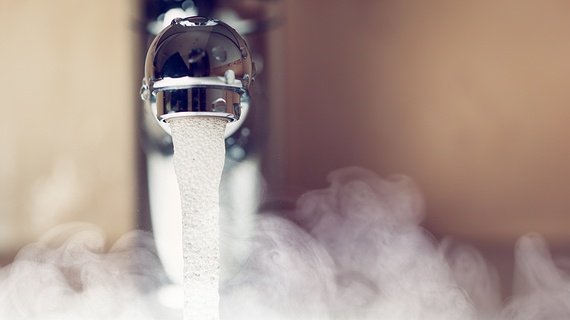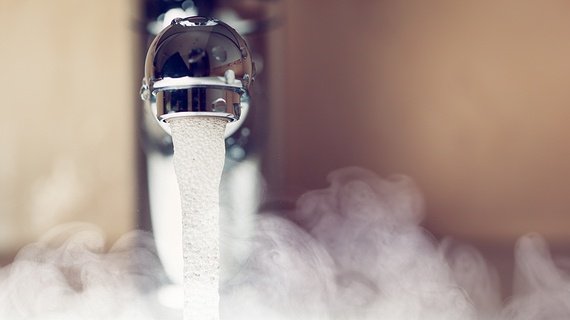
If and when business premises are allowed to stand empty for certain passages of time, the chances are internal water storage facilities and indeed, functionality, will have to be addressed prior to employees making a safe return to familiar surroundings. Failure to establish whether or not water hygiene levels are satisfactory after a period of being dormant could have far-reaching implications on the health and wellbeing of both employees and visitors to businesses.
Understandably, there are a number of reasons as to why an employer's property might lie unoccupied for an undisclosed period; with the current Coronavirus pandemic very much a cohesive example of this. In the wake of the Government instructing businesses other than those either offering essential services and/or those inhabited by keyworkers to literally close for traditional business purposes, a large percentage of bricks and mortar-purposed companies will have witnessed a dramatic downturn in physical occupation.
Which subsequently means water storage assemblages and various outlets will have not experienced human interaction for what could be a significant time. A time of inactivity and non-monitoring during which bacteria might have taken an unseen foothold and pose a dormant health issue going forward.
So what is the solution?
The game plan involves the flushing of an internally located water storage system to ensure that any bacterial presences don't have the opportunity to colonise any more than they might already have in the absence of human scrutiny/general water hygiene housekeeping. Along with the fact that water could have been standing unfacilitated for an indefinite passage of time (with turnover and movement non-existent), the water's optimum - and legionella-avoiding - temperatures might have been compromised during a shutdown of sorts. While cleanliness will also have impacted the closed system, with nutrients setting up home within this period of inactivity.
What Constitutes a 'Little Used' Outlet?
If you refer to the Health & Safety Executive’s HSG274 Legionnaires’ Disease: Technical Guidance Part 2, it clearly states that any outlet “not used for a period equal to or greater than seven days” should be classed as a little used outlet. And as such, this circumstance will exhibit as a notable risk factor. Not least in certain environments where the normal risk to inhabitants is acknowledged as greater. For example healthcare and care home settings.
Remaining with particular settings identified as being high risk, and HSE governance suggests that during the temporary closure/shut down of wards or departments (referring to healthcare scenarios in this instance), flushing regimes need to be continued/implemented until such time as stable temperatures are observed. Described as 'hygiene flushing', the drawing off of water for the avoidance of stagnation needs to be performed weekly - or twice weekly in healthcare premises.
How Do I Got About Flushing?
Returning to the solution to this issue and the subject of 'flushing', and examining the fundamental reasons as to why it's an imperative course of action to take when effectively kick-starting a closed water system that's been redundant for a while. In a sentence, the introduction of a fresh source of cold water - containing residual disinfectant - will disturb and meaningfully disrupt the presence of biofilms, courtesy of the sheering element of running water passing through its infrastructure.
The 'five-minute flush' is a well-versed example of getting to grips with the potential problems which arise from water having collected with very little - if any - movement during a period of inactivity within a building. As practiced by landlords when a property is void, weekly flushing is a good way of minimising bacterial issues. Basically this means opening each tap and water outlet and leaving them to run for at least five minutes.
Water temperatures are equally as important when carrying out the five-minute flush, with any showers in the building being turned up as hot as the settings allow. Hot water should reach a temperature no lower than 50 degrees Celsius after 1 minute's flow; conversely cold water should attain a maximum of 20 degrees Celsius (or below) after 2 minutes running.
Is There Anything Else I Need to be Made Aware of When Flushing a System?
Yes. You should try not to splash any water as part of the flushing process, as should any bacteria-laden water be released as a vapour/spray into the immediate atmosphere, then you could, hypothetically, hasten the spread of legionella, albeit unwittingly. As a rule of thumb, if your water system has been lying idle for a period, the chances are higher levels of legionella will have accumulated in the system; so care needs to be taken to avoid creating aerosols via the subsequent flushing process.
What Alternatives Are There to Flushing?
Before properties emerge from mothballing, and as we've already inferred above, businesses and organisations must ensure that their premises are considered fit for human habitation once again, so as to safeguard against the threat posed by a cross-section of largely unseen bacteria. And as referenced in the relevant sections of ACoP L8 and British Standards guidance regarding flushing.
As we've also learnt thus far, when closed water systems aren't able to drain because of a sustained period of inactivity (culminating in outlets not being facilitated as per normal), this often encourages the proliferation of contaminants. In terms of applying controlled methods of derailing this risk, flushing the system is the best way forward.
Although disinfection protocols, sampling, remedial and possibly dosing the equipment installed will have a similar effect, the costs surrounding these alternative actions could quickly escalate. Hence, the concept of flushing out of a system should be the primary response.
Looking at the practicalities of flushing, and again, as we've already touched on, every effort should be made to guard against producing aerosols at this juncture. Even going as far as to suggest fitting lengths of hose into sink drains or shower heads, and opening slowly so as to avoid excessive splashing.
At the end of the day, the emphasis should be placed on maintaining a flushing agenda during any building lockdown, for whatever reason. When and where workable, obviously. If not, then a thorough recommissioning of the closed water system should be undertaken at the point of people re-inhabiting a building, including the timely revisiting of individual risk assessments created at the outset.







